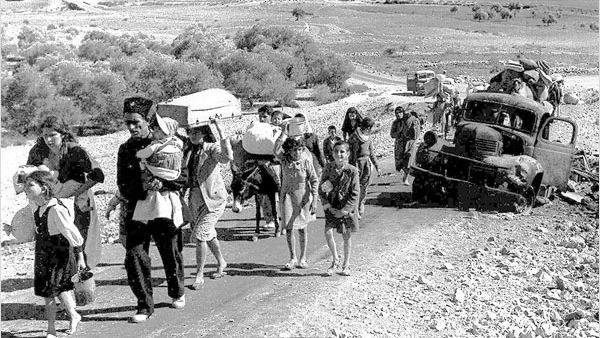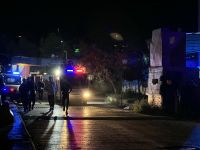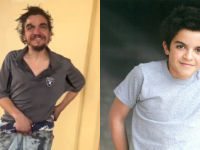The files enveloping the walls and desks of the Oral History Center at the Islamic University of Gaza hold much more than just miscellaneous papers and documents. On the contrary, the tiny office with all of its spewed files actually represents the most “memories per square meter than any other place in the occupied Gaza Strip,” according to The Electronic Intifada.
In a quest to document the history of the Nakba, the ethnic cleansing of Palestinians prior to Israel’s establishment in 1948, as well as the Naksa, Israel’s occupation of the West Bank, Golan Heights and the Sinai in 1967, researchers at the Oral History Center are interviewing and recording the experiences of Nakba’s “last witnesses.”
One member of the research team, Nermin Habid, said that the center has already conducted 1,500 oral interviews and published 120 of them in written form. The team hopes to include video interviews and eventually produce a documentary about the project, but time is running out for the researchers as the remaining Nakba witnesses begin to age and pass away in greater numbers.
“We started thinking about how the generation that survived the Nakba are leaving us,” said Haidar Eid, another member of the research team. “Most of these people are dying. For the project, they are supposed to have been at least ten when the Nakba happened. So we are talking about people in their seventies and eighties.”
Most interviews with the Nakba witnesses lasts anywhere from thirty minutes to three hours and are often divided into three topics of discussion: Palestine before 1948, ethnic cleansing, and refugee life.
The interviews have been a traumatic and tiring process for both the interviewees and the researchers, according to Eid. “Many start crying. They can give you minute details about the strangest things…It’s tiring, I must tell you. Revisiting the trauma is not easy. But they would be very happy to talk about everything before 1948.”
Eid, a refugee himself, shared that even he has avoided recording his story with the team, saying it is extremely difficult for him to recount his experience and acknowledge the absence of documented history about his homeland. “I found only three pictures of [my homeland] Zarnuga [present-day Ramle in Israel]. Only three,” said Eid.
The research team is thus using the oral history project as a way to record the tragic history of Nakba and Naksa from the Palestinian perspective, a narrative that is often overlooked – or absent –within mainstream history records globally.
“The Zionist narrative has been the recognized narrative in the West. The stories of the old are more confident than the history books. They witnessed the events themselves. It’s essential to add a new kind of reference. It’s part of what we call the counter-narrative,” said Habid.
For example, the history of massacres in Tantura has only been exposed widely through oral history forms. According to Eid, “The history of the Tantura massacre relies heavily on oral history. Now people know that a massacre took place in the Tantura village, about 30 meters south of Haifa, based on recorded oral history.” Tantura represents just one case of the “depopulation” of hundreds of villages and cities and subsequent displacement of approximately 750,000 Palestinians at the hands of Zionist forces.
Habid also emphasized that the oral history project plays an important rule in preserving the culture of the Palestinian people: “We are trying our best to maintain our Palestinian identity and Palestinian heritage, customs and traditions, like food and dress, after the Nakba. Oral history has links with all fields of knowledge, like folk medicine. It’s part of our work as historical researchers to convey this information…this work has a lot of benefit for new Palestinian generations [even on a personal level]. It allows them to know that what their grandparents were doing.”
The combination of the cultural and historical objectives of the project have further provided the framework to use the oral histories as tools to promote social justice and activism for the Palestinian cause in Gaza and beyond.
As Eid shared with reporters, “One of the major demands of boycott, divestment and sanctions movement against Israel is the implementation of United Nations Resolution 194, which clearly calls for the return of all Palestinian refugees to the lands, villages and towns from which they were ethnically cleansed in 1948 and their compensation. With the Oral History Project, we are supporting this demand and making it real. We move from ethnic cleansing as an abstract term into the practicality, the life itself.”
In an effort to counteract projects trends that normalize Israel’s ethnic cleansing and occupation of Palestine, the Oral History Center has further established partnerships with Palestine Remembered, an online information archive regarding ethnic cleansing in Palestine, as well as with Zochrot, an Israeli organization that advocates for the right to return. Eid described the center’s partnerships as “a form of co-resistance” against the normalization projects that undermine Palestinian history and the rights of the people.
“The onslaught of normalization projects has taken place at the expense of two-thirds of the Palestinian people who are refugees. 1948 is the original sin, rather than 1967, on which these projects are all based.”
The Oral History Center was established in 1998 as part of the faculty of arts at the university and is staffed by experienced field researchers and recent graduates with training in history, media, journalism, and the social sciences more generally. Beyond research on displacements and refugees, the center conducts programs on Palestinian regions, folklore, politics and culture, and Israeli violations of Palestinian rights.
The Gaza Strip represents the highest proportion of refugees in any territory in the world. The UN agency for Palestinian refugees, UNRWA, has registered more than 1.2 million refugees in Gaza based on records from early 2013. Approximately 66 percent of the Palestinian population estimated to be 11.2 million have been displaced according to 2011 surveys from BADIL.








